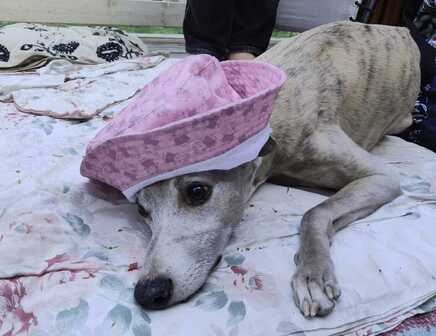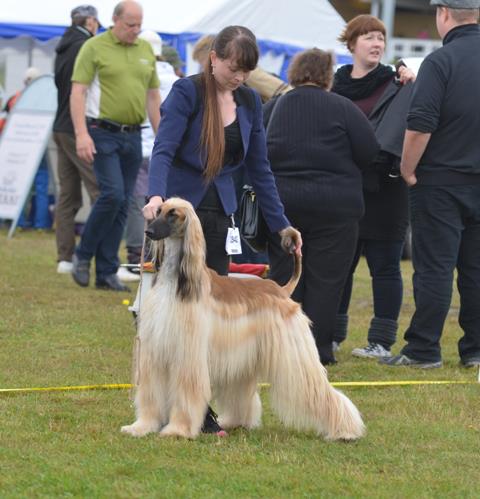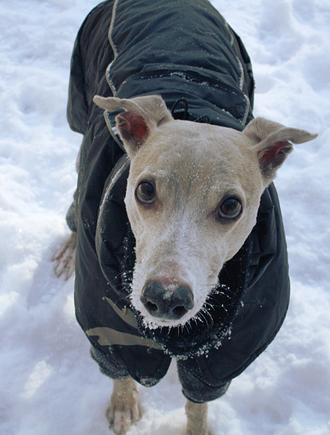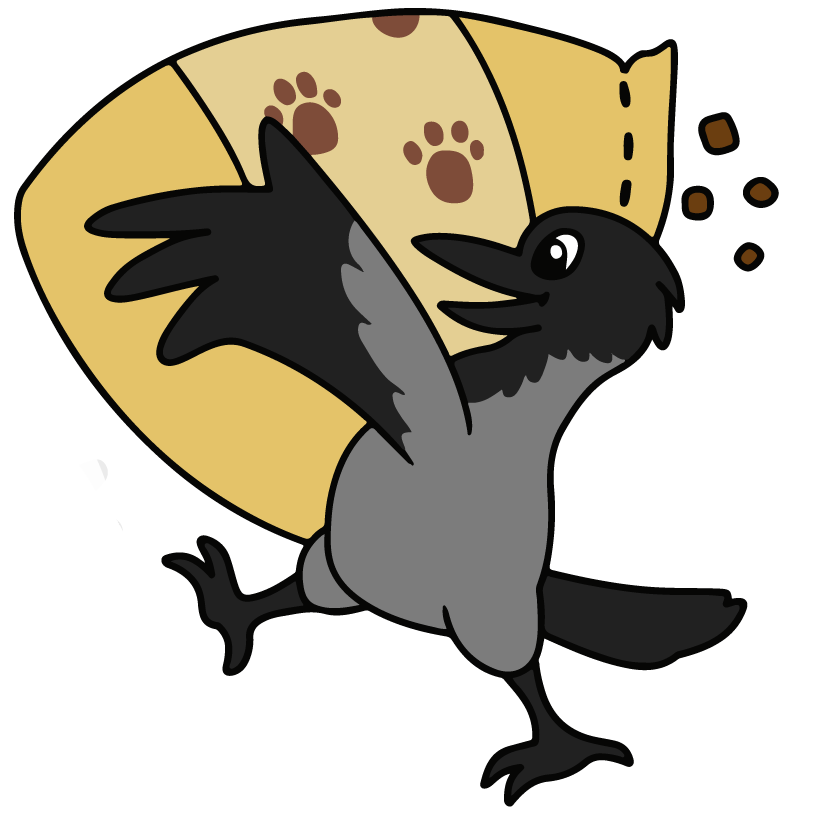|
Kuten monet, myös minä halusin nuorempana väellä ja väkisin tehdä kaikesta hankalaa. Tuli tärkeä olo, kun koki tekevänsä vaikeita juttuja ja omistavansa hankalia koiria. Kuitenkin, omistaessani oikeasti vaativia koiria nyt, voin naureskella nuorelle itselleni ja sille raivokkaalle tarmolle, jolla yritin selitellä itselleni poikiani haastavammaksi kuin mitä ne olivat. Kyllä, Kenraalimajuri oli ja on vieläkin haastava koira hermorakenteensa puolesta, mutta noin muuten ei ollenkaan. Haikalanen on aina ollut ihastuttavan rentouttava elämänkumppani. Varsinkin nuorilla koiraharrastajilla on tapana tehdä asioista välillä turhan hankalia. Syyllistyin tähän itsekin, joten voin näin vuosia myöhemmin myöntää sen ja myös todeta näkeväni sitä toisissa. Koiranomistaminen on kilpavarustelua ja haastavan koiran kasvattamisesta voi lisätä sulan mentaaliseen hattuunsa. Niinpä koiraharrastajilla on tapana glorifioida vaikeutta ja hankaluutta ja tehdä ongelmia sinne, missä niitä ei todellisuudessa ole. Tämä on osaltaan tottumattomuutta, osaltaan antaa luvan olla silloin tällöin väsynyt ja lannistunut. Meidän tulisi olla armeliaampia itsellemme ja ymmärtää, että helponkin koiran kanssa on välillä vähän raskasta. Joskus on lupa todeta, että se vähäkin on tänään liikaa ja istua koko päivä katsomassa telkkaria ja syömässä lohturuokaa, kunhan koiran perustarpeista huolehditaan ja lusmuilu ei tule tavaksi. Haastavuuden ihannointi johtaa helposti siihen, että hankitaan liian vaikeita koiria. Tämä voi osaltaan kannustaa käyttämään kyseenalaisia koulutusmetodeita, kun oma taitotaso ei yksinkertaisesti riitä. Helposti käy myös niin, ettei niistä mutkattomista arjen kavereista ja niiden kouluttamisesta tajua ottaa itselleen krediittiä, vaikka ehdottomasti pitäisi! Oli koira miten mutkaton tahansa, jokainen hyvin käyttäytyvä koira on kouluttaneelle syystäkin ilon, onnen ja ylpeyden aihe. Myös sillä helpolla koiralla voi olla tai sille voi kehittyä ongelma, ja se taas ei tarkoita automaattisesti sitä, että kouluttaja on surkimus. Takana voi olla vaikkapa trauma. Hyvin käyttäytyvästä koirasta saa ja siitä pitää olla ylpeä, oli sen rotu mikä tahansa. Vaivaton, helposti arjen rutiinit ja tavat oppiva koira tulisi nostaa arvostuksessa korkeammalle kuin missä se on nyt. Sen kanssa pääsee nopeasti nauttimaan siitä, mitä koiranomistaminen on parhaimmillaan! Sujuvaa ja stressitöntäHaikalasen kanssa lenkkeily on sitä, mitä koiran kanssa ulkoileminen voi parhaimmillaan olla. Joskus Haikalanen voi pelästyä vastaantulevia, mutta jos tilanteet ennakoi ja pysyy itse rauhallisena, myös Haikalanen selviää ohituksesta nopeasti. Se ei vedä, muttei jumita. Se menee tasaista tahtia hihnanmitan edellä, kiskomatta, nuuhkii silloin tällöin ja tekee asiansa, muttei jää patsastelemaan. Sen kanssa voi uppoutua ihailemaan kevääseen heräävää luontoa tai tarkkailla pikkulintuja pajupusikossa. Sen kanssa voi pällistellä puroja ja hienoja kiviä ja maisemia, tai sen kanssa voi hölkätä rivakasti eteenpäin kunnonkohotusmielessä. Haikalanen ottaa kaikki ihmiset vastaan iloisesti. Se ei arkaile, ei ole vihainen, ei käyttäydy arvaamattomasti. Se ei tee itsestään numeroa vieraiden aikana, mutta tulee iloisena rapsuteltavaksi. Haikalanen on arjessa ihastuttavan mutkaton koira. Lumiprinsessa ja Sotaperuna ovat vaativia. Sotaperunan voimakas aggressio aiheuttaa erityisjärjestelyitä arkeen ja vaatii ahkeraa koulutusta ja treeniä pysyäkseen hallinnassa. Sillä on korkea energiataso ja se haluaa ja myös vaatii fyysistä ja psyykkistä haastamista. Lumiprinsessalla ei ole aggressiota, mutta se on aktiivinen ja touhukas koira, joka varsinkin nuorena tarvitsi roppakaupalla tekemistä ollakseen sisätiloissa ja lepohetkinä hallinnassa. Vaativan koiran kanssa pääsee haastamaan itsensä ja kehittyy kouluttajana. Monesti hyvä harrastuskoira on myös arjessa vaativampi kuin lupsakampi ja rennompi kaverinsa. Vaativan koiran kanssa voi arjestaan saada sujuvaa, mutta se ollatenkin VAATII vaivannäköä. Tästä syystä tulisikin aina kysyä itseltään, onko sille vaivannäölle aikaa? Onko siihen halua? Mukava, mutkaton rotu/koirayksilö antaa aivan yhtä paljon, mutta huomattavasti vähemmällä säätämisellä. Jos ei ole tahtoa eikä tarvetta nähdä vaivaa ja tehdä töitä, kannattaa koira valita se mielessä pitäen. Jokaiselle omansaVaikkei mikään koira ole vaivaton eikä helppo sellaiselle, joka ei koiran kanssa halua elää, vihkiytyneelle koiraihmiselle löytyy roppakaupalla suhteellisen helposti koulutettavia rotu/koiravaihtoehtoja. On paljolti myös asenteesta kiinni, minkä näkee ongelmana. Nuoren uroskoiran törttöilyt kuuluvat yksilöstä ja perimästä riippumatta usein asiaan. Ei niistä kannata vääntää ongelmaa. Ne ovat täysin tyypillisiä nuoren uroskoiran sähläyksiä, joihin kannattaa suhtautua nimenomaan sellaisina eikä vaipua ahdistuksen ja ankeuden suohon ja vakuutella itselleen oman koiransa haastavuutta. Ongelmia ei kannata tehdä sinne, missä niitä ei ole. Se lisää stressiä sekä omistajalla että koiralla. Tulisuuden ja särmän vaaliminen on tärkeää silloin, kun koiran tyypillisesti tulee tällaisia piirteitä syystä tai toisesta ilmentää. Tällaisten piirteiden ihannoiminen ja niiden hakeminen silloin, kun etsinnässä on lupsakka ja helppo arjen seuralainen, on täysin turhaa. Myös maltillisella energiatasolla varustettu koira voi olla luonteikas arjen kaveri ja myös sen kanssa voi vaeltaa kilometritolkulla toreilla ja tuntureilla. Siihen tarkoitukseen ei kannata väellä ja väkisin etsiä sitä koiraa, jolla energiaa on kahmalokaupalla, jolla on voimakkaat vietit ja joka rotutyypillisesti suhtautuu asioihin varauksella. Arjessa helpolla ja mutkattomalla koiralla on sielua parantava vaikutus. Sitä ei tulisi koskaan väheksyä. Haastavakin koira parantaa toki sielua sellaisella ihmisellä, jolla on tarjota sen vaatimuksille sopiva koti. Meidän kannattaakin kysyä itseltämme, mitä me haemme, ja valita seuraksemme koira, joka hakee samaa.
2 Comments
Positive training methods have been widely adopted by many trainers around the world in the past years. This is partly because pets have gained a more important role in families and the demand of humane training methods is growing, but also because newest studies show positive methods have a striking effect on how fast and how eager the dog, or the human for that matter, is to learn. |
Mistä on kyse?Koko elämänsä koiria harrastaneen raakaruokintafriikin ajatuksia, pohdintoja ja elämää koiralauman kanssa. Seuraa meitä
Päivitämme säännöllisen epäsäännöllisesti myös Facebookiin.
Historia
June 2022
Kategoriat
All
|





